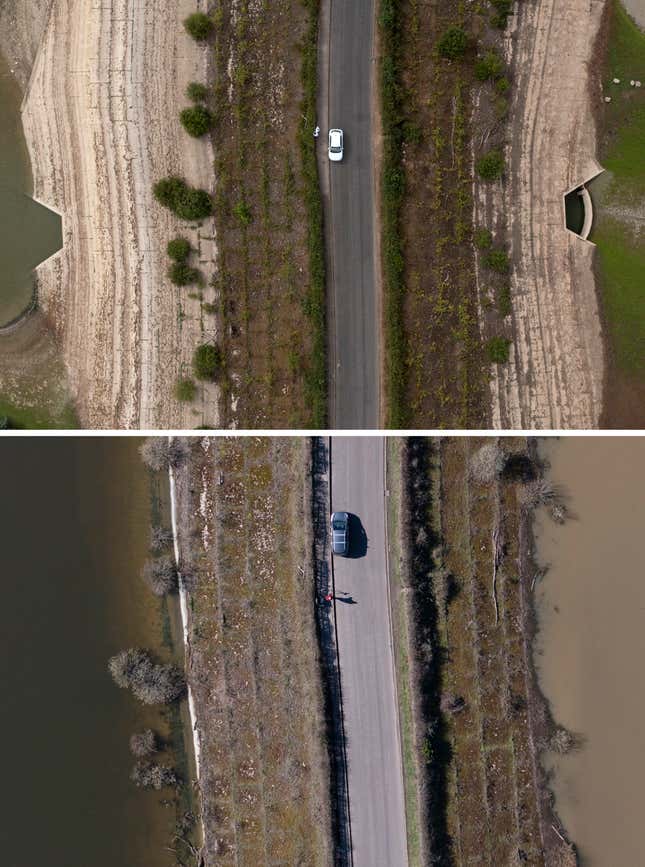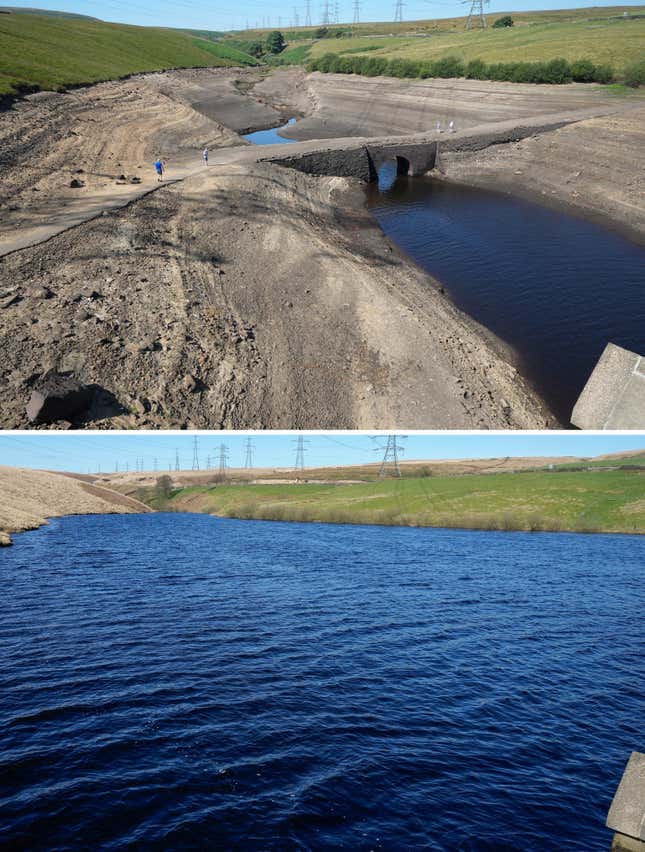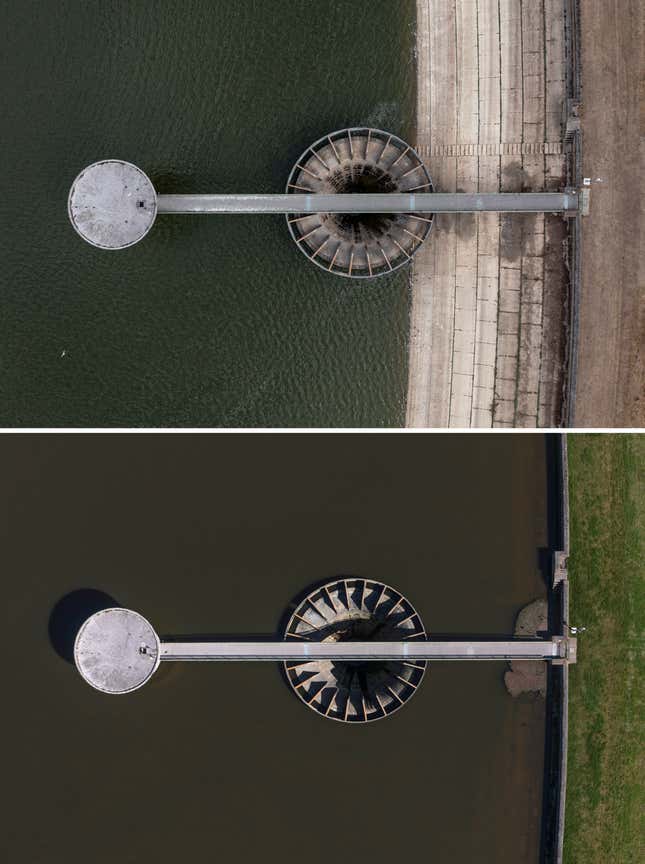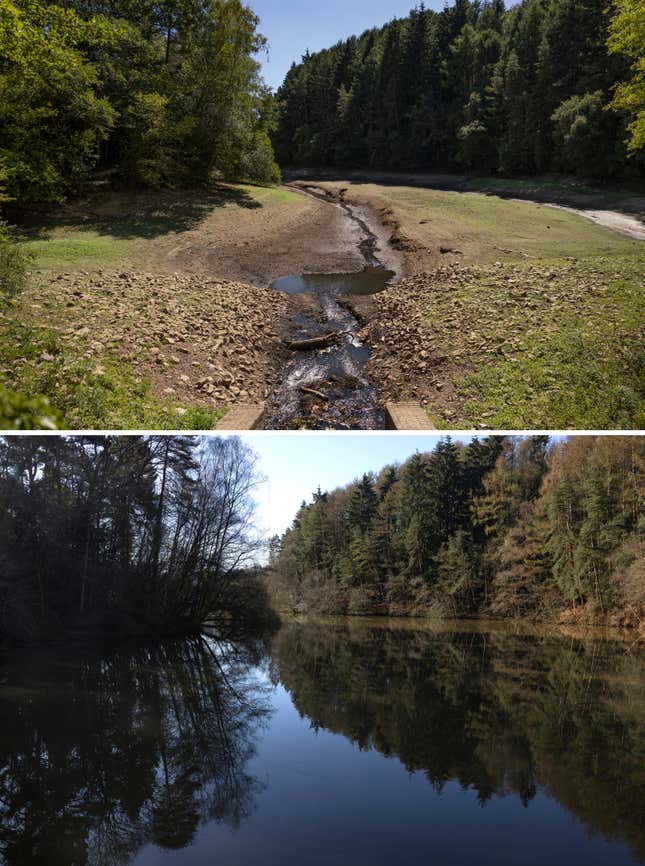After a series of dry months, England is rainy once more.
Both England and Wales had their wettest March since the early 1980s, the UK’s Met Office said. England saw 104% more rainfall than its long-term average, making last month its third wettest March since records began in the 1830s.
The wet weather is a sharp contrast to previous months. February was England’s driest in 30 years, the Met Office said, and the eighth driest on record. While Scotland saw normal amounts of rain, Wales and Northern Ireland also had little rainfall in February, meaning the UK as a whole saw just 45% of its usual rainfall totals.
Like many other parts of the world, England spent much of last year in a punishing drought and suffered under skyrocketing temperatures. Last month’s rain has helped improve some conditions in the UK. Many river flow stations that were at notably low or exceptionally low flows in February were at notably high or exceptionally high flows at the end of March, according to the data portal provided by the UK Centre for Ecology & Hydrology.
But one month of good rain can’t totally erase the damaging impacts of long-term drought. Heavy rains like the ones last month can, paradoxically, also be a symptom of climate change, since warmer air holds more moisture and can intensify storms. The phenomenon referred to as weather whiplash—where regions experience opposing extremes—is expected to increase as the climate continues to change.
And this month’s rainfall, experts say, is not enough to recover from the punishing impacts of last year’s drought. The Met Office’s 3-month outlook for the UK still projects a 30% chance of dry weather and a 50% of above-normal temperatures between April and June.
Click through to see before-and-after photos of how the heavy rains have dramatically altered reservoirs and rivers throughout England.







